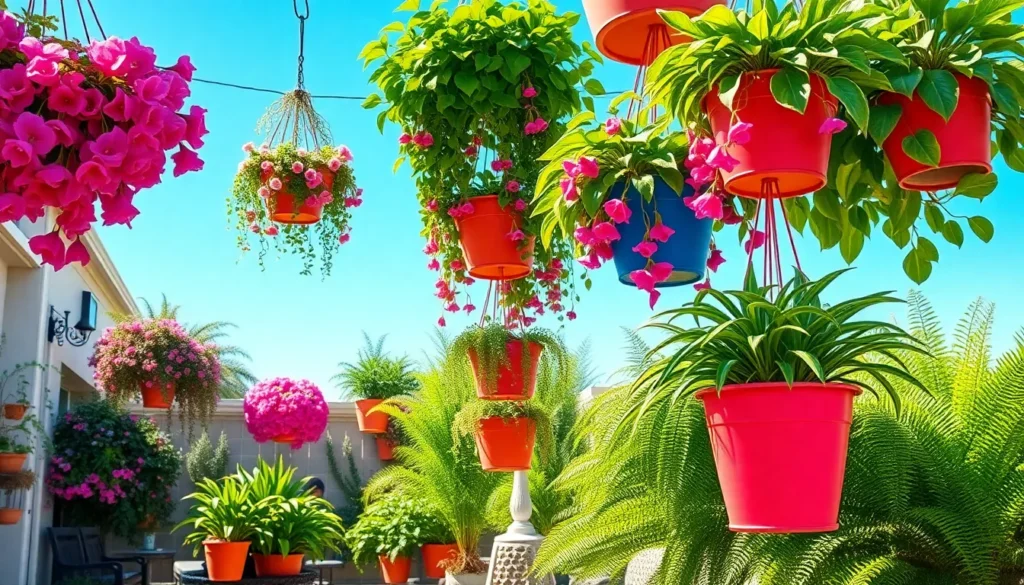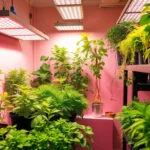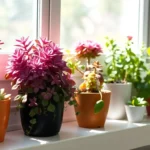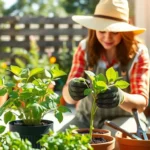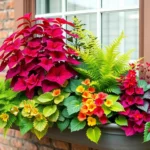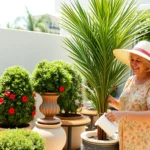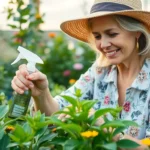We’ve all been there – staring at our outdoor spaces and wondering how to add life and color without sacrificing precious ground space. Hanging plants offer the perfect solution, transforming blank walls, empty porches, and boring balconies into vibrant green sanctuaries that catch every eye.
The magic of outdoor hanging plants isn’t just about aesthetics. They maximize your growing space, create natural privacy screens, and bring nature to eye level where you can truly appreciate their beauty. Whether you’re working with a sprawling patio or a tiny apartment balcony, the right hanging plants can completely transform your outdoor experience.
We’ve spent countless hours researching and testing the most stunning, low-maintenance options that thrive in hanging baskets. From cascading flowers that spill over edges like living waterfalls to lush foliage that creates instant jungle vibes, we’ll help you discover which plants will turn your outdoor space into the envy of the neighborhood.
Best Flowering Hanging Plants for Outdoor Spaces
Flowering hanging plants create stunning displays that cascade downward with bursts of color throughout the growing season. We’ve selected these top performers based on their reliable blooming habits and adaptability to various outdoor conditions.
Petunias for Vibrant Color Display
Petunias deliver exceptional color impact with their trumpet shaped blooms that appear in waves from spring through fall. We recommend grandiflora varieties like ‘Supertunia Vista Bubblegum’ for their large 4-5 inch flowers and excellent heat tolerance. Wave petunias spread 3-4 feet wide in hanging baskets while maintaining their flowering power even in temperatures reaching 90°F.
These plants thrive in full sun locations receiving 6-8 hours of direct sunlight daily. Grandiflora petunias produce fewer but larger blooms measuring up to 5 inches across, while multiflora types create dense displays of smaller 2-3 inch flowers. Regular deadheading every 3-4 days encourages continuous blooming and prevents the plants from going to seed prematurely.
Fuchsias for Shade Gardens
Fuchsias excel in partial shade conditions where other flowering plants struggle to perform. We’ve found that hardy fuchsia varieties like ‘Gartenmeister Bonstedt’ and ‘Delta’s Sarah’ produce elegant pendant flowers with distinctive two-toned petals in shades of pink, purple, red, and white. These plants prefer morning sun with afternoon shade protection, making them perfect for north-facing patios or under pergolas.
Temperature sensitivity makes fuchsias ideal for cooler coastal climates or areas with summer highs below 80°F. Upright fuchsias work well in hanging baskets when pinched regularly to encourage branching, while trailing varieties like ‘Swingtime’ naturally cascade 18-24 inches. Consistent moisture without waterlogged soil keeps these plants flowering from late spring through the first frost.
Million Bells for Continuous Blooms
Million bells (Calibrachoa) produce tiny petunia-like flowers in incredible abundance from spring until hard frost. We particularly value varieties like ‘Superbells Cherry Red’ and ‘Cabaret Purple’ for their self-cleaning properties that eliminate the need for deadheading. These plants generate over 1,000 small flowers per plant during peak season, creating dense carpets of color in hanging containers.
Drought tolerance makes million bells excellent choices for sunny locations where consistent watering proves challenging. Full sun exposure of 6+ hours daily maximizes flower production, though plants tolerate partial shade with reduced blooming. Heat tolerance allows these plants to maintain their appearance in temperatures up to 95°F when provided with adequate water every 2-3 days during peak summer months.
Best Trailing Foliage Plants for Outdoor Hanging Baskets
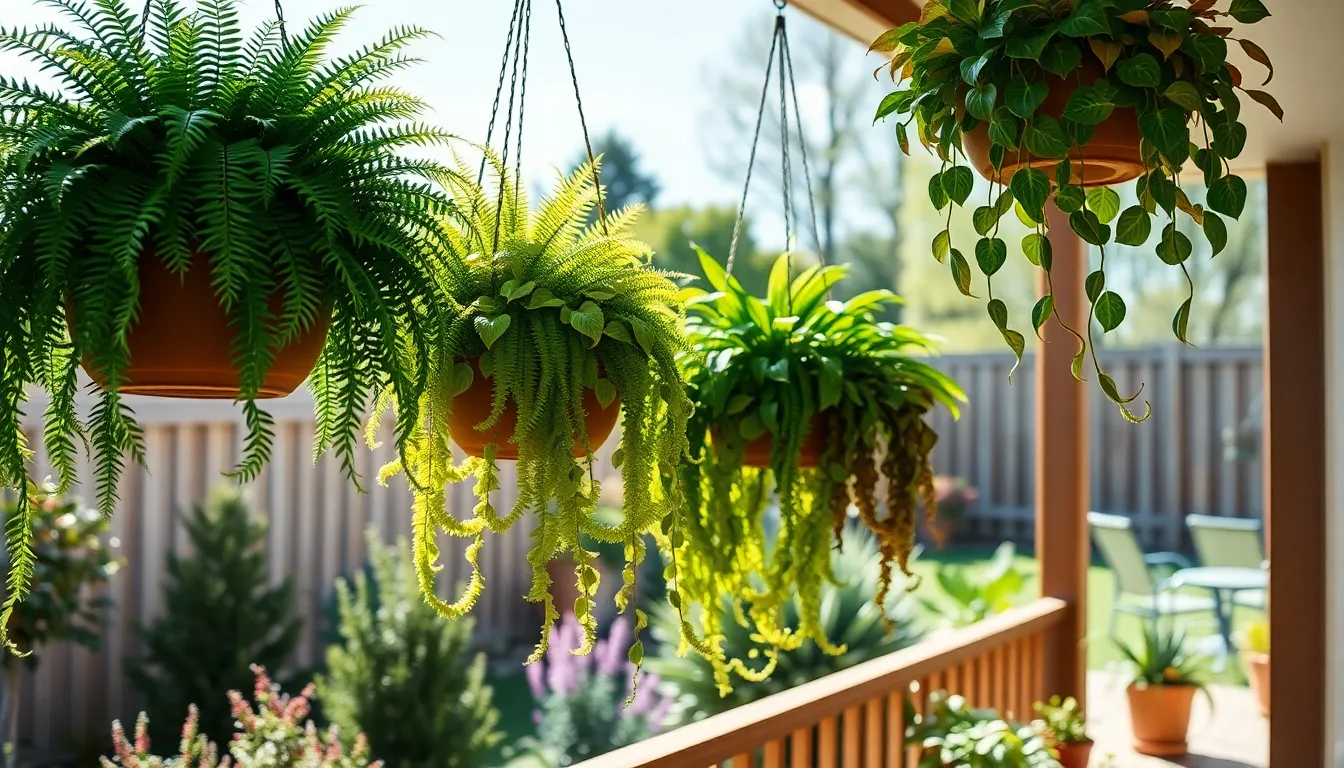
While flowering varieties create stunning displays, foliage plants offer year-round beauty and sophisticated texture for outdoor hanging baskets. These trailing plants excel at creating lush, cascading greenery that transforms any outdoor space into a natural sanctuary.
Boston Ferns for Lush Green Appeal
Boston ferns deliver dense, feathery fronds that create the ultimate tropical atmosphere in outdoor hanging displays. We’ve found these classic ferns thrive in shaded or partly shaded locations where they can maintain consistent moisture levels. Their rich texture and dense greenery make them perfect for creating dramatic cascading effects that spill gracefully over basket edges.
Consistent humidity keeps Boston ferns looking their best throughout the growing season. These plants prefer temperatures between 65-75°F and need protection from harsh afternoon sun. Regular misting helps maintain the humidity levels they crave, especially during dry summer months.
Spider Plants for Easy Maintenance
Spider plants offer exceptional hardiness combined with striking arching leaves featuring distinctive white stripes. These adaptable plants require minimal care while delivering maximum visual impact in outdoor hanging arrangements. Their tolerance for varying conditions makes them ideal for gardeners seeking low maintenance trailing foliage.
Bright, indirect light suits spider plants perfectly for outdoor hanging displays. We recommend placing them in areas that receive morning sun but avoid intense afternoon heat. Their drought tolerance means occasional watering keeps them thriving, and they’ll reward you with cascading baby plantlets that add extra visual interest.
Pothos for Year-Round Beauty
Pothos plants excel in outdoor hanging baskets with their heart-shaped leaves in stunning variegations of green, yellow, and white. These versatile trailing plants adapt to warm, sheltered outdoor spots where they provide continuous ornamental appeal. Their resilient nature makes them suitable for year-round displays in mild climates.
Drought tolerance sets pothos apart from other trailing foliage options, requiring less frequent watering than most hanging plants. These plants thrive in partial shade to filtered sunlight and can handle occasional neglect. Various cultivars offer different leaf patterns, from golden pothos with bright yellow variegation to marble queen with cream and green leaves.
Best Succulent Hanging Plants for Outdoor Areas
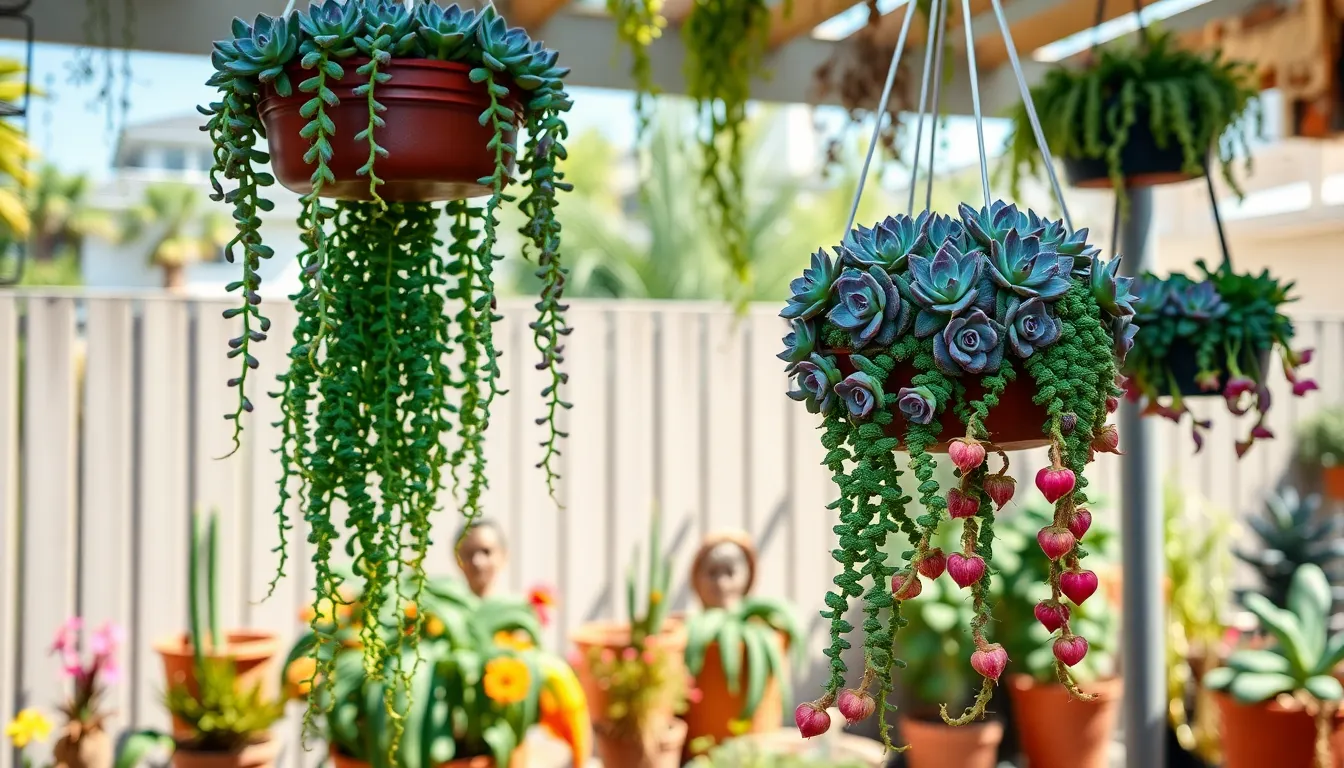
Succulent hanging plants bring drought-resistant beauty to outdoor spaces while requiring minimal maintenance. These water-storing plants thrive in sunny conditions and create stunning cascading displays year-round.
String of Pearls for Unique Texture
String of Pearls (Senecio rowleyanus) creates an extraordinary visual display with its small, round “pearls” cascading along delicate stems. We’ve found this succulent performs exceptionally well when provided with adequate light and regular fertilization during the growing season. The pearl-like leaves store water efficiently, making this plant incredibly drought tolerant once established. Gardeners appreciate how the unique spherical foliage adds textural interest that contrasts beautifully with traditional flowering hanging plants. This succulent grows quickly in outdoor settings, producing long trailing stems that can cascade several feet from hanging baskets.
Burro’s Tail for Desert Gardens
Burro’s Tail (Sedum morganianum) develops impressive trailing stems that can reach up to 4 feet in length, creating dramatic cascading effects in desert-style gardens. We recommend this succulent for USDA Hardiness Zones 10 and 11, where it thrives in full sun to partial shade conditions. The plump, fleshy leaves overlap along each stem, resembling a donkey’s tail and providing excellent water storage capacity. Desert garden enthusiasts particularly value this plant’s ability to withstand intense heat and drought conditions while maintaining its attractive blue-green coloration. The stems become more robust and colorful when exposed to bright outdoor light, making them perfect for southwestern-style landscapes.
String of Hearts for Romantic Appeal
String of Hearts (Ceropegia woodii) enchants outdoor spaces with its distinctive heart-shaped leaves that create romantic cascading curtains from hanging baskets. We’ve observed this succulent performs best in well-draining soil with full sun to partial shade exposure throughout the day. The delicate trailing stems develop attractive purple undersides on the heart-shaped leaves, adding depth and visual interest to outdoor displays. Romantic garden designs benefit greatly from this plant’s elegant trailing habit and distinctive foliage pattern. The succulent nature of String of Hearts ensures it remains beautiful even during dry spells, making it ideal for gardeners seeking low-maintenance romantic appeal in their outdoor hanging displays.
Best Edible Hanging Plants for Outdoor Growing
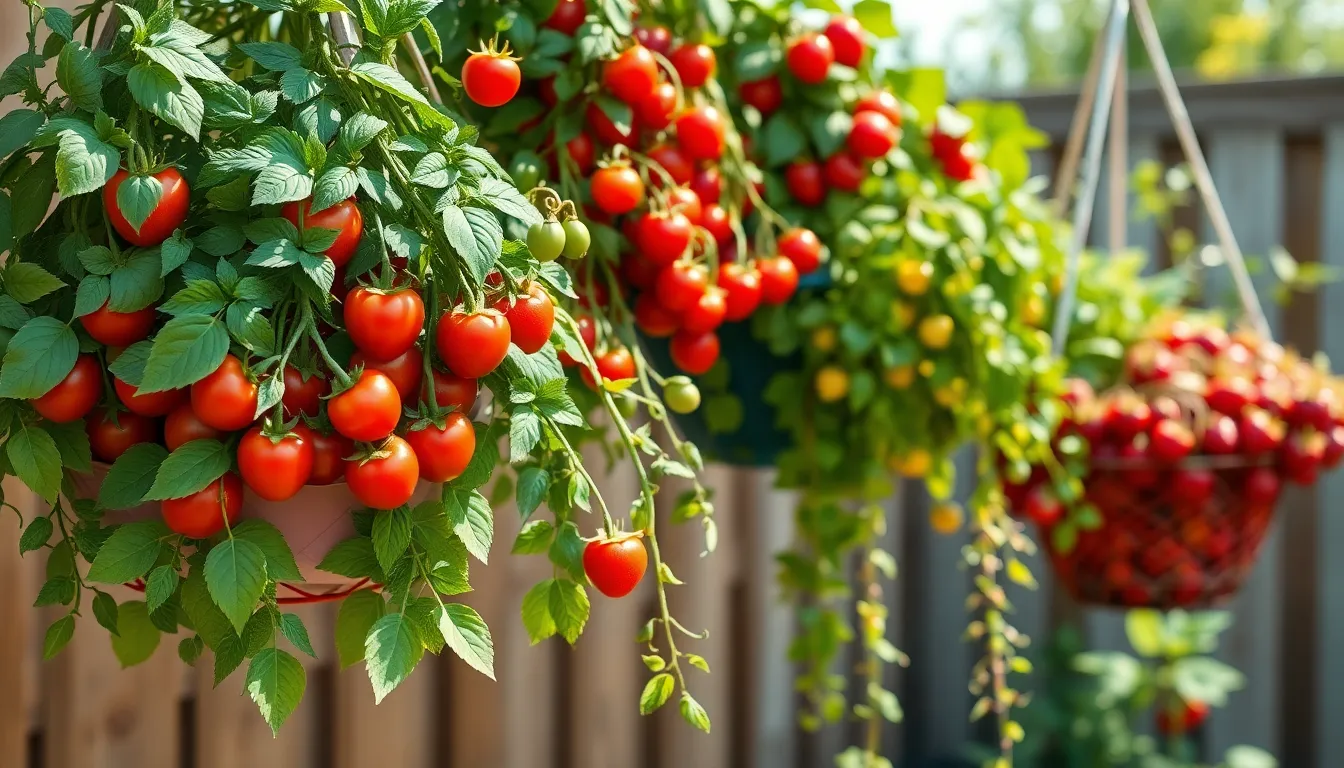
We’ve discovered that combining beauty with functionality transforms ordinary hanging displays into productive garden features. Our research shows that certain edible plants thrive in elevated containers while delivering fresh harvests throughout the growing season.
Cherry Tomatoes for Fresh Harvests
Cherry tomatoes excel in hanging baskets due to their compact growth habit and impressive yields throughout the season. We recommend these miniature varieties because they require minimal space while producing abundant clusters of sweet, bite-sized fruits. The plants need at least six hours of direct sunlight daily to achieve optimal fruit production and maintain healthy growth patterns.
Container growing allows us to position cherry tomato plants in the sunniest spots of our outdoor spaces. Their trailing vines cascade beautifully over basket edges while supporting heavy fruit loads without additional staking. We’ve found that regular watering and weekly fertilizing keep these productive plants thriving in hanging displays.
Strawberries for Sweet Treats
Strawberry varieties like Albion, Evie, and Mara des Bois deliver exceptional performance in hanging basket environments. We select these exact cultivars because they produce sweet, fresh berries continuously throughout the growing season rather than in single flushes. Their compact root systems adapt perfectly to container restrictions while maintaining robust fruit production.
Hanging strawberry plants create stunning cascading displays as their runners trail over basket edges. We position these plants where they receive morning sun and afternoon shade to prevent fruit from overheating during peak summer temperatures. The elevated growing method also protects developing berries from ground pests and soil-borne diseases.
Trailing Herbs for Culinary Use
Trailing herbs like basil, mint, and thyme transform hanging baskets into functional kitchen gardens that enhance our cooking adventures. We choose these aromatic varieties because they cascade naturally while providing continuous harvests of fresh leaves for seasoning dishes. Chives add both culinary value and pest-deterrent properties through their edible flowers and strong scent.
These herbs thrive in well-draining hanging containers while requiring minimal daily maintenance beyond regular watering. We harvest leaves frequently to encourage bushy growth and prevent flowering, which can reduce leaf production. The elevated position allows us to easily access fresh herbs while cooking and creates fragrant displays that enhance our outdoor dining experiences.
Best Low-Maintenance Hanging Plants for Outdoor Spaces
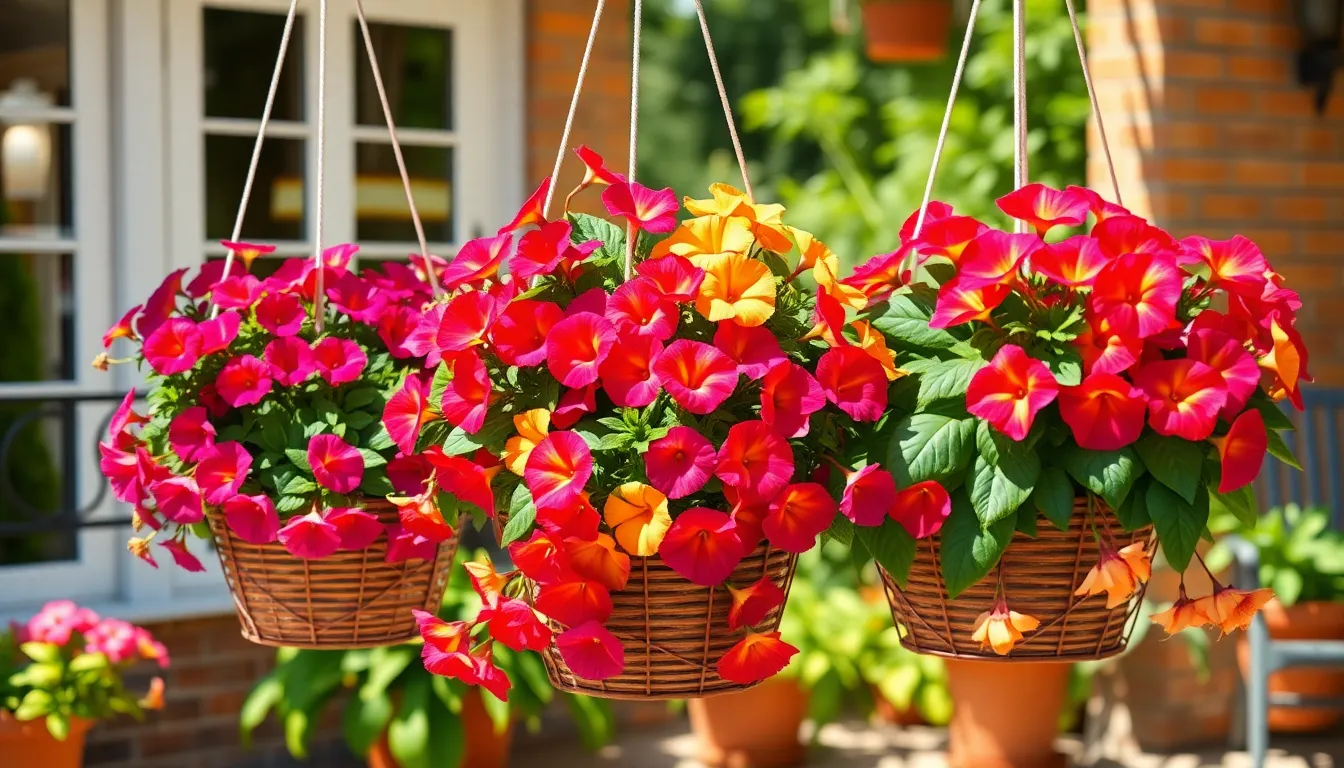
After exploring flowering, foliage, succulent, and edible options, we’ll focus on the ultimate low-maintenance champions that thrive with minimal intervention. These plants deliver stunning displays while requiring little effort from busy gardeners.
Portulaca for Drought Tolerance
Portulaca grandiflora stands as our top choice for hot, dry outdoor locations where other plants struggle. This succulent-like beauty, commonly known as moss rose, produces vibrant flowers in pink, yellow, orange, and red throughout summer without constant watering.
Thriving conditions include full sun exposure and well-draining soil, making it perfect for south-facing patios and sunny balconies. We’ve found that portulaca actually performs better with infrequent watering, as it stores moisture in its fleshy leaves and stems.
Growth characteristics feature a naturally trailing habit that creates beautiful cascades in hanging baskets. The colorful blooms open in sunshine and close during cloudy weather, adding ever-changing visual interest to your outdoor display.
Bacopa for Minimal Care Requirements
Sutera cordata delivers continuous blooms with remarkably little maintenance throughout the growing season. This South African native produces masses of small white, pink, or blue flowers that create a delicate, cloud-like appearance in hanging baskets.
Care requirements involve moderate sunlight and regular but not excessive watering, making it ideal for gardeners who travel frequently. Bacopa tolerates various weather conditions and shows excellent resistance to common garden pests.
Performance benefits include its ability to bloom continuously from spring through fall without deadheading. We appreciate how this plant bounces back quickly from heat stress and maintains its flowering display even during challenging weather periods.
Sweet Potato Vine for Fast Growth
Ipomoea batatas fills hanging baskets rapidly with lush, ornamental foliage that creates instant impact. This vigorous grower comes in bright chartreuse varieties like ‘Margarita’ and deep purple options such as ‘Blackie’ for dramatic color contrast.
Growth rate reaches impressive speeds, with vines extending several feet within weeks of planting. Sweet potato vine adapts to full sun or partial shade conditions, making it versatile for various outdoor locations throughout your space.
Maintenance advantages include tolerance for moderate drought once established and minimal fertilizer requirements. We recommend this plant for gardeners wanting maximum visual impact with minimal time investment, as it requires only occasional watering and basic care.
Best Hanging Plants for Different Outdoor Light Conditions
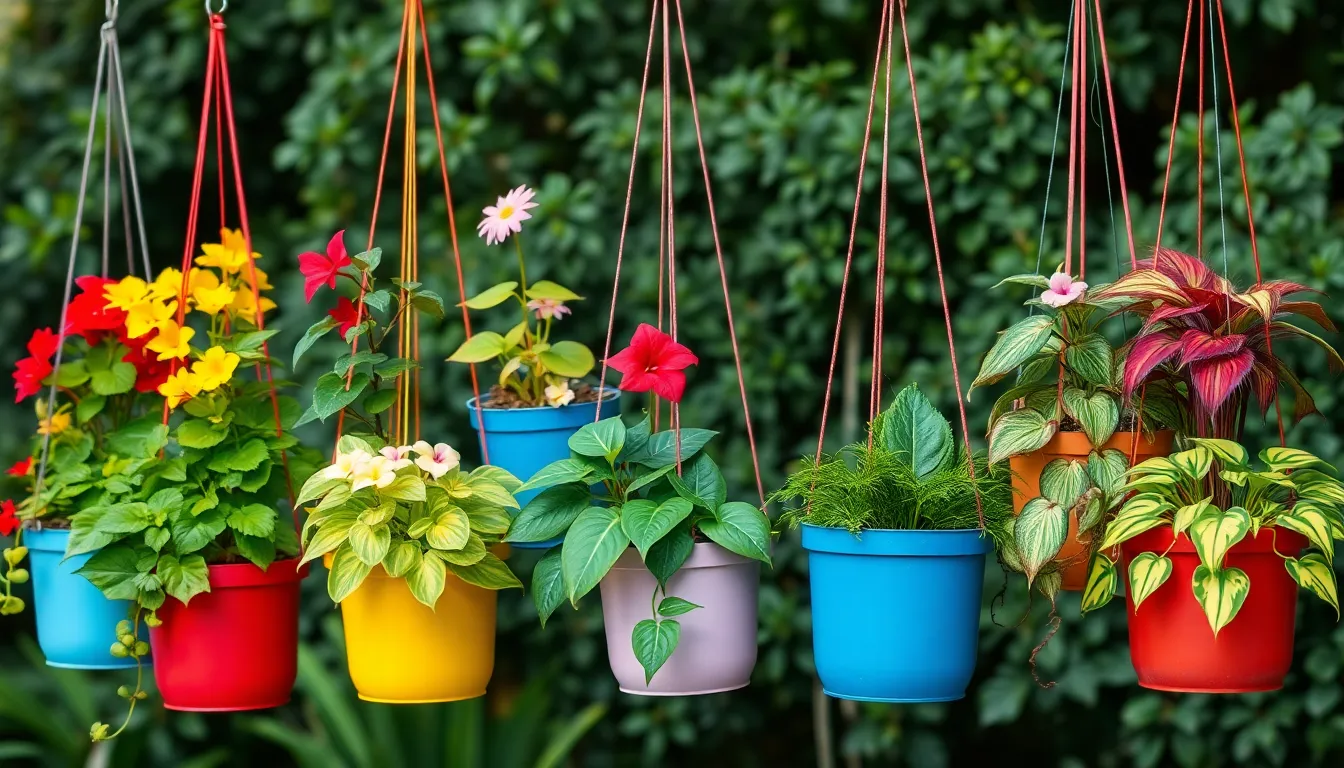
Selecting the right hanging plants for your outdoor space depends largely on understanding your exact light conditions. We’ll explore the best options for each lighting scenario to help you create thriving displays.
Full Sun Hanging Plants
Ivy Geranium stands out as our top choice for hot, sunny locations, delivering vibrant blooms with minimal maintenance requirements. These heat-loving plants thrive in intense sunlight and produce cascading flowers throughout the growing season. Regular deadheading extends their flowering period and keeps displays looking fresh.
Geraniums excel in full sun conditions, tolerating heat while producing abundant blooms from spring through fall. Morning sun with some afternoon shade works particularly well in extremely hot climates. Feed them regularly and remove spent flowers to encourage continuous blooming throughout the season.
Dragonwing Begonias adapt beautifully to full sun exposure, maintaining their heat tolerance while flowering consistently from spring through frost. Their low maintenance nature makes them perfect for busy gardeners. Water these plants early morning or evening to prevent sun scorch during peak heat hours.
Partial Shade Options
Lipstick Plant (Aeschynanthus japhrolepis) thrives in partial shade conditions, producing stunning bright red flowers when given adequate light. Its cascading leaves create an attractive trailing effect that looks spectacular in hanging displays. Insufficient light may reduce flowering, so bright indirect light works best for optimal blooms.
Hoya Tricolor (Hoya carnosa ‘tricolor’) performs exceptionally well in partial shade, showcasing its popular waxy leaves and unique flowers. Bright light conditions encourage the most prolific flowering displays. This variety combines attractive foliage with occasional blooms for year round interest.
Lobelia flourishes with morning sun or dappled light combined with afternoon shade, especially in hot summer climates. These delicate flowers prefer cooler conditions and benefit from protection during the hottest part of the day. Their cascading growth habit creates beautiful flowing displays in hanging containers.
Deep Shade Varieties
Neon Pothos (Epipremnum aureum ‘Neon’) maintains its vibrant chartreuse foliage even in full shade conditions, making it incredibly versatile for dark outdoor spots. This undemanding plant grows reliably in low light while providing bright color impact. Its trailing nature creates lush cascading displays that brighten shaded areas.
Pothos adapts remarkably well to various light conditions including deep shade, making it suitable for covered porches and shaded garden areas. Water only when the soil feels dry to the touch. These hardy plants tolerate neglect while maintaining their attractive heart shaped leaves.
Spider Plant adjusts to low light conditions while preferring bright, indirect light for optimal growth. Keep the soil evenly moist but not waterlogged. Their arching leaves and plantlets create interesting architectural elements in shaded hanging displays.
Best Seasonal Hanging Plants for Year-Round Outdoor Interest

Creating stunning outdoor displays throughout the year requires strategic plant selection that adapts to changing weather conditions. We’ve researched the most reliable options that’ll keep your hanging baskets beautiful across all seasons.
Spring and Summer Selections
Petunias deliver the most spectacular color displays during warm months, with varieties like ‘Back to Black’ and ‘Amore™ Queen of Hearts’ creating striking visual impact. These popular bloomers perform excellently in hanging baskets and can last all summer with proper care. Their large, colorful blooms and diverse patterns make them our top choice for seasonal interest.
Fuchsias bring dramatic flair with their trailing stems and vibrant flowers that thrive in part sun conditions. These semi-hardy perennials bloom extravagantly throughout spring and summer, though some varieties require overwintering indoors to survive frost. Their unique drooping flowers create an elegant cascading effect that’s hard to match.
Begonias offer exceptional tolerance to spring frosts while providing continuous summer blooming with attractive foliage. These low maintenance plants combine colorful flowers with interesting leaf patterns, making them ideal for spring and summer hanging baskets. Their reliability and ease of care make them perfect for beginners.
Calibrachoa, often called “million bells,” produces profuse blooms on trailing branches that continue flowering through frost with regular pruning. These vibrant performers create dense displays of small, petunia like flowers that maintain their beauty throughout the warmer months. Their drought tolerance and continuous blooming habit make them exceptionally valuable.
Fall and Winter Hardy Options
Violas and Pansies excel in cool weather conditions, tolerating prolonged rains and low temperatures that would damage other plants. These cheerful bloomers require regular watering and good light but reward gardeners with continuous color through fall and early winter. Their cold hardy nature makes them essential for year round displays.
Kimberly Queen Ferns provide lush green foliage that survives through cooler months, adding essential texture and fullness to winter hanging baskets. These hardy ferns maintain their vibrant appearance when other plants fade, creating a foundation of greenery during dormant seasons. Their architectural form adds sophisticated structure to cold weather arrangements.
Dwarf Hydrangea paniculata varieties survive in containers through fall and winter, offering seasonal interest with their distinctive flowers and foliage. These compact shrubs adapt well to hanging basket life and provide substantial visual weight during colder months. Their dried flower heads create winter interest even after blooming stops.
Geraniums continue blooming well into fall, especially in warmer climates where they can survive mild winters outdoors. These hardy performers can be pruned back and protected for winter survival or brought indoors in harsh climates. Their reliability and long blooming period make them valuable transitional plants.
Transitional Plants for Changing Seasons
Lavender thrives in full sun and dry conditions, making it perfect for bridging summer to fall transitions with aromatic flower spikes. This drought tolerant herb adds fragrance and texture while requiring minimal care during seasonal changes. Its silvery foliage and purple blooms create elegant displays that work across multiple seasons.
Heuchera (Coral Bells) adapts to changing temperatures while providing diverse foliage colors in compact, container friendly sizes. These versatile perennials offer year round interest through their colorful leaves rather than flowers. Their cold hardiness and heat tolerance make them ideal for uncertain weather periods.
Coleus brightens baskets through late summer and fall with vibrant foliage colors that intensify as temperatures cool. These easy to grow plants focus on leaf color rather than flowers, creating bold displays that transition beautifully between seasons. Their simple propagation allows gardeners to easily expand their collections.
Essential Care Tips for Outdoor Hanging Plants
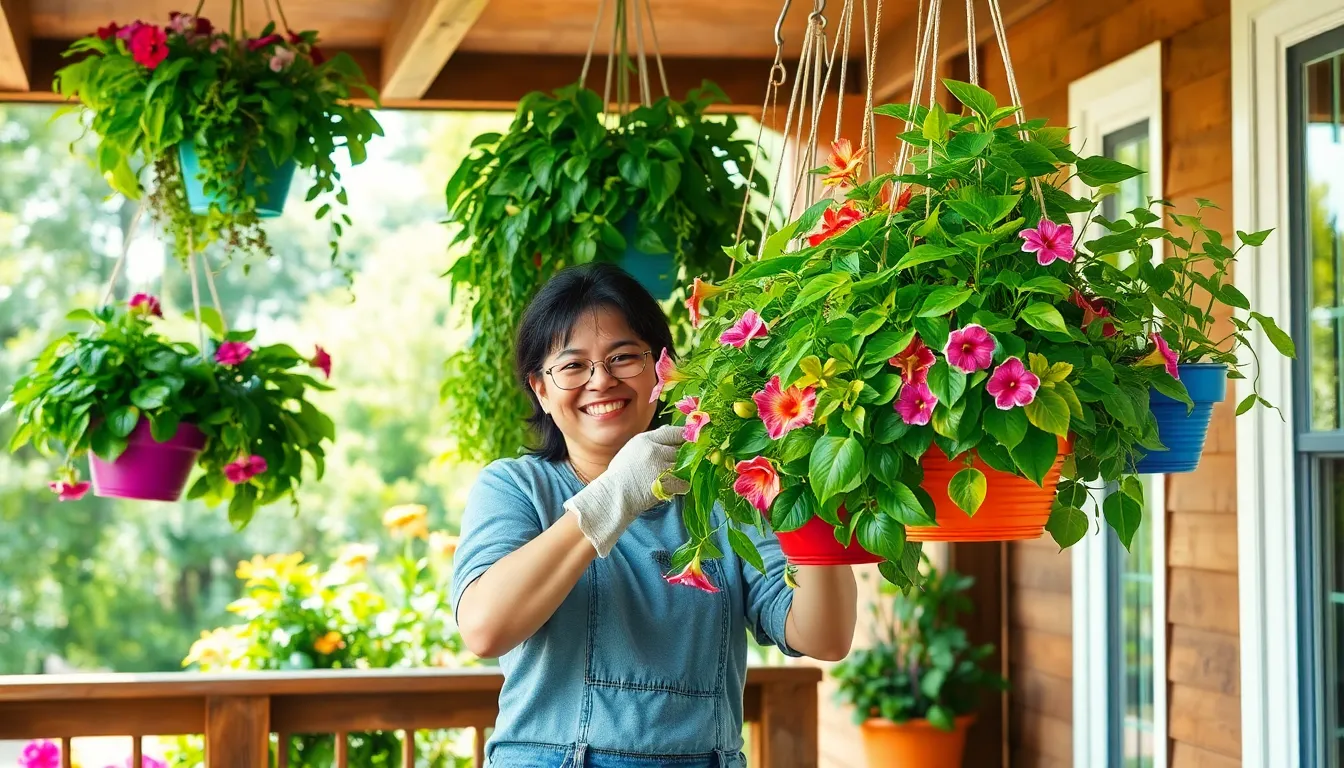
Now that we’ve explored the best plant options for different outdoor conditions, let’s jump into the essential care practices that’ll keep your hanging displays thriving throughout the growing season.
Watering and Drainage Requirements
Consistent watering becomes critical for hanging plants since they dry out faster than ground-planted varieties. We recommend checking your baskets daily during mid-summer when water needs increase significantly as plants grow and temperatures rise.
Water during the coolest part of the day to minimize evaporation and maximize absorption. Early morning watering allows plants to hydrate before facing the day’s heat stress.
Check basket weight regularly to assess watering needs accurately. Lift your containers to gauge moisture levels – lighter baskets typically need immediate attention.
Ensure proper drainage in all containers to prevent root rot from overwatering. We suggest using baskets with adequate drainage holes since drowning roots proves more harmful than occasional drying.
Plan for extended absences by watering baskets thoroughly, removing them from hooks, and placing them in shaded areas to reduce water loss.
Fertilizing and Feeding Schedules
Regular feeding becomes essential since hanging baskets contain limited soil that depletes nutrients quickly. We recommend applying balanced liquid fertilizers every 2-3 weeks throughout the growing season.
Choose slow-release fertilizers at planting time for steady nutrient supply without frequent applications. These granular options provide consistent feeding for several months.
Monitor plant response to fertilizing schedules and adjust frequency based on growth patterns and flowering performance. Heavy feeders like petunias may require more frequent applications than drought-tolerant succulents.
Pruning and Maintenance Guidelines
Deadhead spent flowers immediately to encourage continuous blooms and maintain attractive appearances. We’ve found this simple practice extends flowering periods significantly.
Prune leggy stems regularly to promote bushier growth and maintain desired shapes. Trimming overgrown portions redirects energy into new growth and fuller displays.
Remove yellowing leaves promptly to prevent disease spread and maintain plant health. Damaged foliage often signals watering issues or pest problems requiring immediate attention.
Monitor for pests and diseases weekly during growing seasons and treat problems early before they spread. We recommend inspecting both leaf surfaces and stems for common issues like aphids or spider mites.
Conclusion
We’ve explored a diverse range of hanging plants that can transform any outdoor space into a stunning vertical garden. From vibrant flowering varieties to drought-resistant succulents and productive edible options there’s a perfect hanging plant for every gardener’s needs and skill level.
The key to success lies in matching plants to your exact growing conditions and maintenance preferences. Whether you’re working with full sun patios or shaded porches these versatile plants offer endless possibilities for creating beautiful cascading displays.
Remember that proper care including consistent watering appropriate fertilizing and regular maintenance will keep your hanging gardens thriving throughout the seasons. Start with one or two varieties that suit your space and gradually expand your collection as you gain confidence.
Your outdoor hanging garden awaits – it’s time to elevate your gardening game and enjoy the beauty that comes from thinking vertically!
Frequently Asked Questions
What are the best flowering hanging plants for outdoor spaces?
The top flowering hanging plants include petunias, fuchsias, and Million Bells (Calibrachoa). Petunias offer vibrant colors and thrive in full sun, while fuchsias perform excellently in partial shade. Million Bells provide continuous blooms and are drought-tolerant, making them perfect for sunny locations with minimal maintenance requirements.
Which foliage plants work best in outdoor hanging baskets?
Boston ferns, spider plants, and pothos are excellent choices for trailing foliage. Boston ferns thrive in shaded areas with their lush fronds, spider plants are hardy with striking arching leaves, and pothos offer heart-shaped leaves with great adaptability. All three provide year-round beauty with minimal care requirements.
What are the best low-maintenance hanging plants for beginners?
Portulaca grandiflora (moss rose), Bacopa, and Sweet Potato Vine are ideal for low-maintenance gardening. Moss rose is drought-tolerant with vibrant blooms, Bacopa provides continuous flowers with minimal care, and Sweet Potato Vine offers rapid growth and lush foliage for instant visual impact.
Can I grow edible plants in hanging baskets outdoors?
Yes! Cherry tomatoes, strawberries, and trailing herbs like basil, mint, and thyme work wonderfully in hanging baskets. Cherry tomatoes provide impressive yields in sunny spots, strawberries offer continuous fruit production, and herbs create functional kitchen gardens while beautifying your outdoor space.
Which hanging plants are best for different light conditions?
For full sun, choose Ivy Geranium, Geraniums, and Dragonwing Begonias. Partial shade areas benefit from Lipstick Plant, Hoya Tricolor, and Lobelia. Deep shade locations work well with Neon Pothos, regular Pothos, and Spider Plants, all of which thrive in low-light conditions.
What are the best drought-resistant hanging plants?
Succulent hanging plants like String of Pearls, Burro’s Tail, and String of Hearts are excellent drought-resistant options. These plants store water efficiently, require minimal maintenance, and provide unique textures and visual interest while withstanding dry conditions and heat.
How often should I water outdoor hanging plants?
Check hanging baskets daily during hot weather and water when the soil feels dry. Water during the coolest parts of the day to prevent evaporation and stress. Hanging plants typically dry out faster than ground plants, so consistent monitoring is essential for healthy growth.
What fertilizer schedule works best for hanging plants?
Use balanced liquid fertilizers every 2-3 weeks during the growing season, or apply slow-release fertilizer at planting time. This provides consistent nutrition for continuous blooms and healthy foliage growth without over-fertilizing, which can reduce flowering and promote excessive leaf growth.
How do I maintain healthy hanging plants throughout the season?
Regular deadheading of spent flowers, monitoring for pests, and proper pruning are essential. Remove dead or damaged foliage promptly, ensure proper drainage to prevent root rot, and adjust watering frequency based on weather conditions to maintain attractive, healthy displays.
Which hanging plants provide year-round outdoor interest?
For seasonal interest, use petunias and begonias in summer, violas and pansies in cooler months, and transitional plants like lavender, heuchera, and coleus. Hardy foliage plants like Boston ferns and evergreen varieties can provide structure and color throughout multiple seasons.

